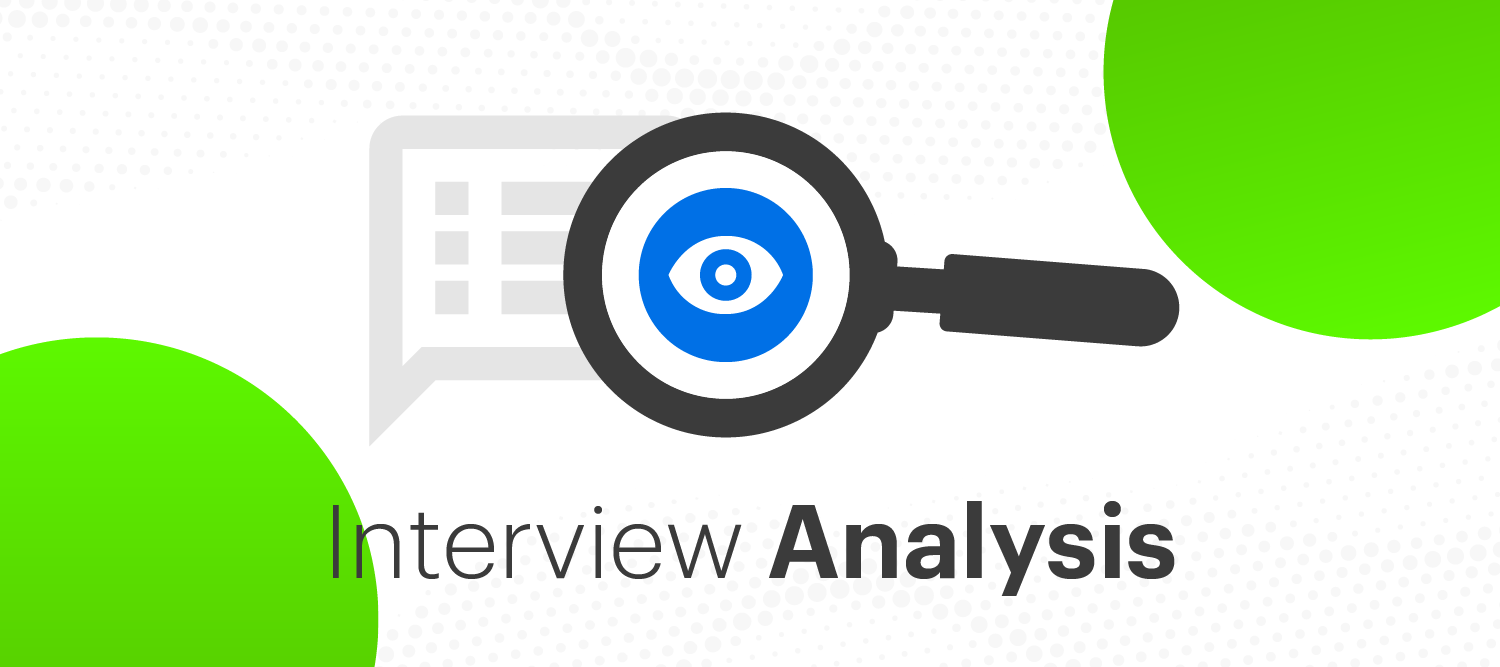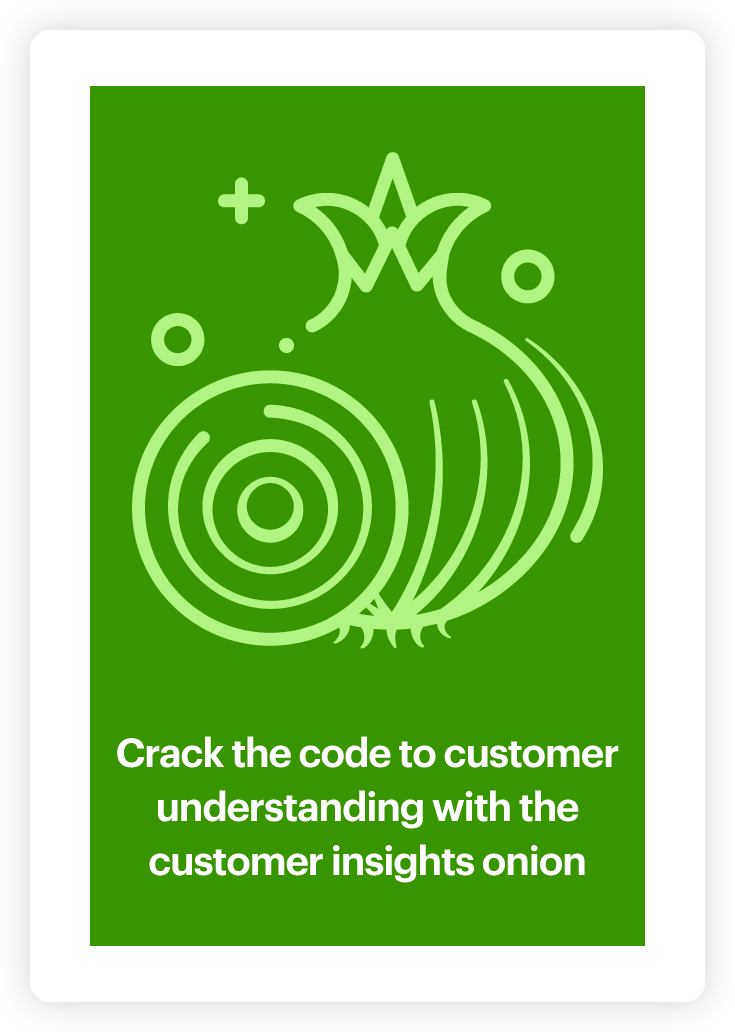The expert guide to interview analysis

The key to commercial success is always being able to keep your finger on the pulse of your target audience. But how do you really know what your customers want? One effective method is through interview analysis.
Interviews and focus groups are a tried and tested way of obtaining actionable customer insights. But whether you’re conducting a focus group or one-on-one interviews with the members of your target audience, it’s important to have a robust system in place for effectively analyzing your interview data.
So, what are the most effective interview questions and how do you analyze interview data to get the most out of this lean research method?
In Relative Insight’s ultimate guide, we’ll go through the steps involved in analyzing the data gathered from interview sessions and look at how you can effectively utilize this information within every aspect of your business.
Why is interview analysis important for market research?
Interviews are one of the most effective ways to identify consumer attitudes and preferences toward a brand, product or service.
If done properly, interviews provide qualitative information about what people think and how they feel. The ability to communicate personally with customers enables you to ask follow-up questions and delve deeper into your target audience’s thoughts and opinions.
Asking open-ended questions during an interview can be extremely useful because:
- Participants use their own language and are not limited to pre-determined answers.
- The quality of the data is often superior to other channels, as the research is more specific and substantive.
- Qualitative market research can be tied to quantitative analytics. By asking people for their thoughts and opinions, you will be able to answer the why behind the numerical measurements i.e. why customer loyalty has decreased, how consumers react to product features, drivers of customer satisfaction and dissatisfaction.
Analyzing interviews and focus group transcripts can provide businesses with vital customer insights examples. If analyzed thoroughly, unstructured qualitative data can be turned into actionable forms of business intelligence that can influence strategic decision-making.
Top tips for conducting an interview or focus group
When conducting an interview or focus group, it’s important to inform participants that there are no right or wrong answers. After all, you want to identify the real drivers of customer satisfaction, dissatisfaction or purchase intent.
To ensure you have valuable data to work with, it’s essential to make sure that your interviewees are encouraged to answer your questions in as much detail as possible. Don’t be afraid to ask participants to elaborate on their answers, clarify what they mean or phrase the question in a different way to ensure the topic of discussion has been fully addressed.
That being said, if the conversation takes a different turn, it can often be beneficial to just roll with it. It is the job of the focus group facilitator to manage time, keep the conversation flowing and ensure the discussion doesn’t steer too off track. However, the beauty of organic conversation is that unbeknown to you, important trends and themes might emerge that hadn’t occurred to you before.
A key challenge of focus groups is trying to incite all participants to give their views and opinions. Facilitators should help to encourage quieter interviewees to share their opinions, along with managing those who speak for longer.
How to analyze interview data
Transcription
Once interviews and focus groups are complete, it’s important to change the format of the data as raw audio can be difficult to analyze. Employ a reliable transcription service to convert your audio files into text, and this will enable you to conveniently conduct interview analysis of your unstructured data.
Transcription services typically refer to a professional company that will transcribe your audio recording into written words. This can be an extremely useful resource for future analysis and reference.
Using transcripts of consumer interviews for market research is important because they allow the researcher to interrogate the data, spot trends and uncover insights that might otherwise go unnoticed.
The manual interview analysis process
When it comes to your interview analysis, you’ll find that there will be a lot of words to get through and doing this manually is time consuming. Market researchers often follow the below process:
- Get familiar with your market research – Read and reread interview transcripts in order to familiarize yourself with the data to understand of questions, themes and topics.
- Code or label the text – Code and label any topics within the text that you feel could be relevant or interesting.
- Discover broader themes and patterns – After your initial analysis is complete, group data into wider themes that are relevant to your project.
- Manually compare transcripts and review themes – Conducting a review of the interview data is a crucial step. It includes reading through verbatims and checking if there are any inconsistencies or overlaps between the data.
- Define and finalize themes – By defining your themes, you are describing what each theme is about. In this stage, you should be able to answer questions such as: Why is this theme interesting? What story does this tell?
- Write up – Finally, write up your findings and analysis as a coherent narrative. This should explain your methodology, plus highlight the themes found throughout the data evidenced through quotes from participants.
While this approach is effective, it’s not perfect. Unfortunately, when humans conduct interview analysis, consciously or subconsciously they infuse insights with their biases. Analyzing interviews manually is a complicated, time-consuming and expensive process to get right.
Benefits of using text analytics for interview analysis
Relative Insight makes interview analysis straightforward, scalable and efficient. Using Relative Insight’s text analytics technology to analyze your interview and focus group transcripts enables you to transform your data into immediate, actionable insights.
Our technology utilizes comparison to analyze text data, enabling you to discover trends you didn’t know to look for. The platform compares two or more written data sets to highlight the differences and similarities in topics, words, phrases, grammar and emotion. This form of analysis enables businesses to find out what is unique about a data set, be it a customer segment, time frame or competitor.
Insight teams use Relative Insight to squeeze the most value out of their qualitative research. Our software taps into the full potential of interview data to develop actionable insights by:
Identifying what is valuable
Using Relative Insight for interview analysis identifies what is valuable in a data set. By surfacing the interesting, significant words and phrases that target consumers use, you can uncover key customer insights and trends that are invaluable to every area of your business.
Maximizing the value of one data set
By using Relative Insight’s split functionality, businesses can get the most out of their interview data. You can slice and dice transcripts in different ways using various metadata points, such as age or location. You can then run multiple comparisons based on these splits.
Removing bias
Human bias in implicit in manual interview analysis. However, using a text analysis tool surfaces what This uncovers surprising nuggets of information within your interview data that you might not have known to look for.
Quick analysis at scale
Relative Insight provides an accurate and scalable way of analyzing large volumes of interview transcripts. The algorithm provides you with an effective method of analyzing millions of words without having to read them.
How do you analyze interview data?
Our use cases are as limitless as your imagination, but through comparison, you can discover transformative insights from your interview analysis and run comparisons such as:
- Customer segment – How does the language used by two customer segments differ?
- Interviews over time – Has consumer opinion of your product, brand or service changed over time?
- Promoter vs Detractor – What language do promoters use in comparison to detractors?
Analyzing interview transcripts is crucial if you want to find out what your customers are thinking. So, if you’re sitting on a mountain of interview data that you don’t know how to analyze, get in touch. Relative Insight can transform your interview transcripts into a goldmine of insights. What are you waiting for?
